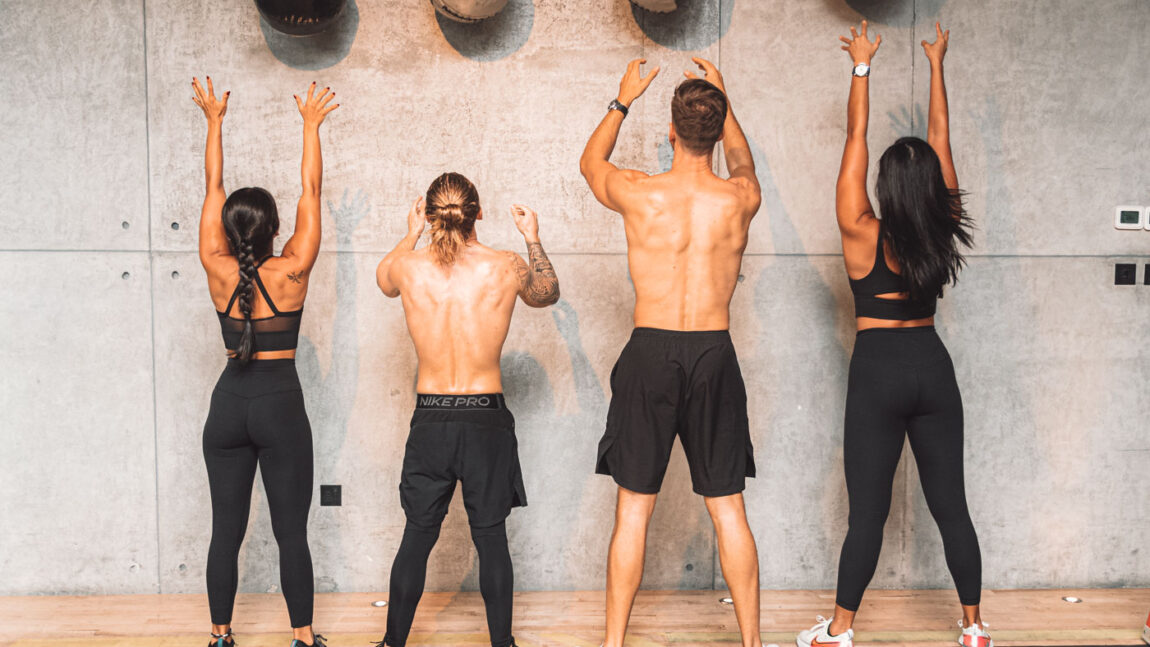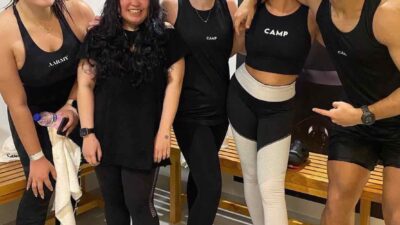Being able to put as little effort in as possible and reap the rewards is appealing to just about everyone.
Conventional thinking is that you will need long hours in the gym and only “eat clean.”
“The disease or more.” More reps, more weight, more HIIT classes, more broccoli, and protein shakes.
Like consumerism, it can leave you feeling perpetually unsatisfied and wanting more.
There is never enough when it comes to training and health. There are no finish lines and a “happy place” where you’ll arrive.
So, why continually beat yourself up if you don’t have to?
Maybe you love training to the point of exhaustion every day before work? Maybe, you love quinoa and steamed broccoli instead of pizza? (On a side note, who seriously likes quinoa? 🤮 )
Does that sound like you? Then you should probably stop reading now.
For the rest of us, “normal” people going to the gym and eating well is a hard choice.
We are all biologically hardwired to preserve our energy and search for pleasure, not pain.
Think of exercise like a drug. You want the minimum effective dose for a response. The doctor never tells you to take 20 aspirins at once because you have a big headache.
Overtraining can have as many negative repercussions as not training enough.
The minimalist approach to exercise is doing just enough and no more.
Refining your goals will give you a perfect road map of the effective dose. Taking you from point A to point B in a straight line.
If you have more than two goals on your list at a time, you will find it hard to cut back and be successful.
Simplifying and focusing on what is most important must not be overlooked.
Clients I coached in the past have come to me with a goal list like this. “I want to drop 5kg, get bigger arms, eat plant-based, run 5km without stopping and train 5x per week. And I would like to do it before the end of the year.”
Unfortunately, your body isn’t like a yum cha trolly, picking five or six items and paying for them at the end.
“I’ll have one dim sum and a washboard six-pack to go.” 
There can be conflicting goals from a biological function and mentally exhausting trying to stick to a never-ending list of things you will need to do.
One of the limiting factors of training is how well you can recover and adapt from the training stimulus. Doing less will help you facilitate a quicker and more effective recovery.
Quicker recovery = shorter timeline to achieving your goals.
Achieving your goals will make you happy and enjoy the process. It starts to become a snowball gaining momentum. Tick off one goal and move on to the next.
All by doing less.
Hate doing burpees? Good news, you don’t have to do them. There are a million different ways you can reach your fitness target. Look for the easiest and most enjoyable way.
The Pareto 80/20 rule applies to your training just like all other aspects of life.
“The 80-20 rule, also known as the Pareto Principle, is a familiar saying that asserts that 80% of outcomes (or outputs) result from 20% of all causes (or inputs) for any given event.” From Investopedia.com
Applying this rule to training means that 80% of your training results will come from 20% of your efforts.
For example, if you have ten exercises in your strength training program, you will get 80% of your stimulus from two of them. The other eight exercises will only facilitate the last 20%.
Why not do the two or even three exercises and decrease your training time and effort by 80%?
Seems too good to be true?
Pick the RIGHT exercises and put forth the appropriate intensity. Simple as that.
What are the “right” exercises for you?
It can depend on many factors like biomechanics, mobility, age, training age, and most importantly, your specific goals.
However, there are overarching principles that will apply to just about everyone.
If you’re trying to lose weight, put on muscle, run faster, or improve your health, you will need to be strong.
Strength is king for all outcomes!
“But what if I’m trying to lose weight? Won’t it make me bulky?”
We get this question just about every day. Yes, you can lose weight without being strong or doing resistance training.
You could run on the treadmill two hours a day and only eat 1200 calories. Would it be optimal, healthy, and sustainable?
If we have two people of the same height and weight, one person is at 35% body fat, and the second is at 20% body fat, body circumference measures and strength will be drastically different.
A person with higher body fat and less muscle will have substantially higher circumference measure “bulky,” lower strength, and their ability to drop body fat decreases.
Controlling your nutrition will stop you from bulking up or gaining weight with resistance training.
The minimalist approach checklist – Strength training
Seven primal movements will give you the most bang for your buck, popularised by holistic health coach Paul Chek.
- Squat – Squats, hack squat
- Lunge – Bench step up, side lunge, reverse lunge
- Push – Push-ups, bench press
- Pull – Chin up, row variations
- Twist – Pallof press, med ball throws
- Bend/hinge – Deadlifts
- Gait – Walking, jogging, running

Pick one or two of the above movements each time you go into the gym and keep your repetitions under six for four sets. Ensure the weight is heavy enough to induce fatigue at the final few repetitions.
Eliminating all single joint and muscle exercises to the bigger compound lifts enables better use of time and means you will be focusing on the 20% that is important.
The caveat with this approach is mobility and form must not be overlooked. Each exercise has variations and regressions will ensure you can arrive safely and improve.
Approaching mobility and weak links with the same minimalist mindset is the key. Find one or two drills or exercises that give you the biggest bang for your buck.
Once you have trained like this for a few weeks, you can start sprinkling back in some accessory-type exercises where needed.
For example, if you lack strength in a particular movement or muscle group. Then targeting the weak links will start to fall into your 20%.
As a general rule of thumb, the exercises you are not good at are usually the ones you will need to focus on. A good coach identifies weak links if you do not already know. It can be a good idea to film or get a second set of eyes to watch your key lifts.
Improving those weak links will give you the greatest return for all of your time and efforts.
The last pro tip is to leave your phone in your bag or turn it on airplane mode if you need it for recording your weights.
Scrolling through Instagram during your rest periods is a no-no. Breathe, hydrate and focus.
What is the ONE fitness target that you would like to achieve? Find the path of least resistance for the minimalist approach.
Stay Strong,
Coach Adam








Add Comment